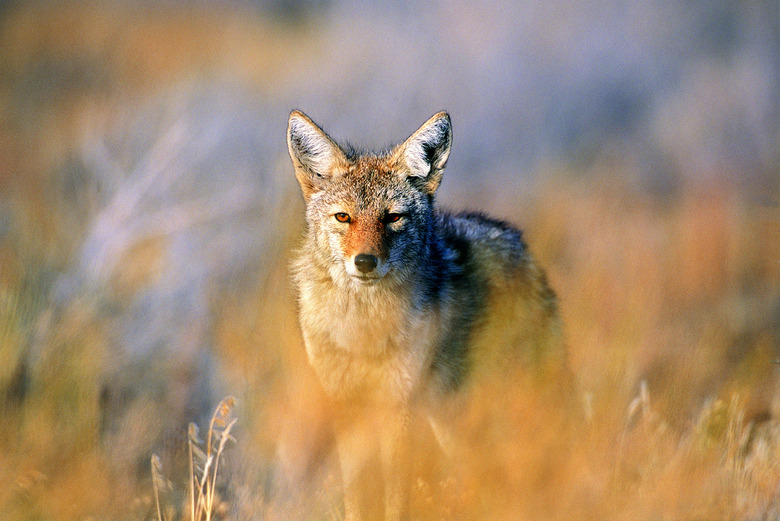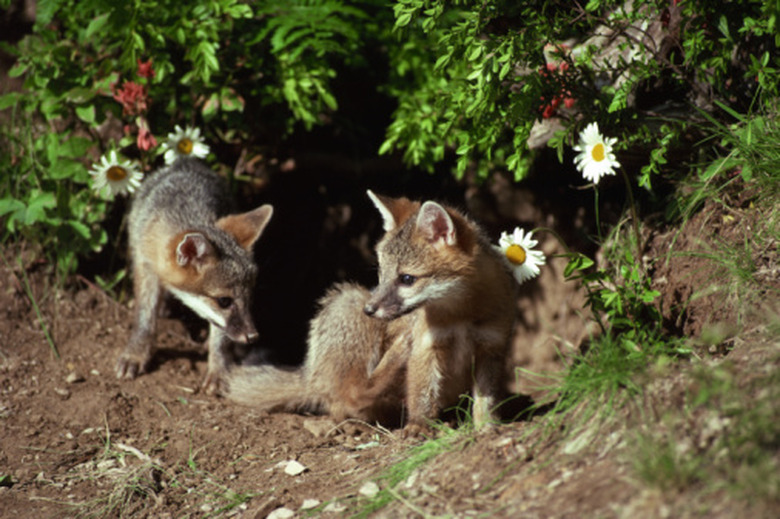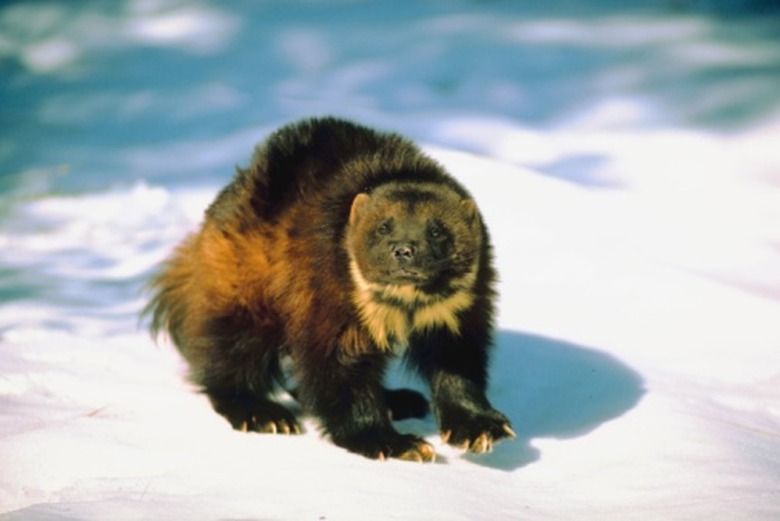What Types Of Carnivores Are In California?
California has very diverse and healthy ecosystems. They range from deserts to grasslands, mountains, coastal plains, oceans and forests. There is still much room for carnivores large and small throughout the state. Though birds, fish and insects can be said to be carnivorous, this list concentrates on mammals, which have the teeth and jaws usually associated with carnivores.
Black Bear and Coyote
Black Bear and Coyote
The North American black bear (Ursus americanus) is an omnivore that sometimes eats deer fawns and elk calves. This bear has been known to steal the kills of not only cougars but human hunters. The grizzly bear, which is on the state flag of California, no longer exists in the wild in California.
The coyote is an opportunistic hunter with a very varied diet. A coyote will kill small mammals such squirrels, mice, and voles, but also eats lizards, snakes, birds, livestock and insects. Coyotes also steal kills from other animals. As they have come to live in and around cities, they will eat human refuse and pets such as dogs and cats. Coyotes form packs to take down larger animals such as deer and elk. Some hunt with badgers. The badger is good at digging rodents out of their burrows. The coyote isn't, but it can run the animal down. Either way, when the rodent is flushed out either the coyote or the badger has it.
Mountain Lion
Mountain Lion
The mountain lion or cougar (Puma concolor) is a large solitary cat whose range includes California. It too will eat whatever prey is available, be it deer, elk, bighorn sheep, squirrels, muskrat, porcupine, or even other cougars. It will take domestic prey as well. Mountain lions sometimes cache their prey, burying it under leaves and debris and returning at night to eat it.
Gray Fox
Gray Fox
The gray fox (Urocyon cinereoargenteus) is the most common fox in California, and like the black bear it is omnivorous. It eats rabbits, voles, shrews, birds, beetles, butterflies and moths. It will also scavenge. Sometimes the gray fox caches its food and marks it with scent to discourage other predators.
Bobcat
Bobcat
The bobcat (Lynx rufus) is another opportunistic hunter. It most often likes rabbits and rodents but it will also take birds, and even reptiles. The bobcat's not above hunting pets and livestock, including chicken. This ambush hunter lies in wait for its prey before it pounces. It will even take deer, which are much larger than bobcats.
Wolverine
Wolverine
Like many other mustelids (members of the weasel family), the wolverine (Gulo gulo) is surprisingly strong and aggressive, and it will take prey that is much larger than itself, including elk and deer. The wolverine delivers a killing bite to the back of the neck or tears out the prey's throat. It will even try to steal the kills of much larger animals such as black bears. Wolverines, like foxes, mark their food caches with secretions from scent glands.
References
- University of Michigan Museum of Zoology: Animal Diversity Web
- The Life of the Forest; Richard B. Fischer, et. al.; 1966
- The Life of the Mountains; Richard B. Fischer, et. al.; 1966
Cite This Article
MLA
McKanic, Arlene. "What Types Of Carnivores Are In California?" sciencing.com, https://www.sciencing.com/types-carnivores-california-8184953/. 22 November 2019.
APA
McKanic, Arlene. (2019, November 22). What Types Of Carnivores Are In California?. sciencing.com. Retrieved from https://www.sciencing.com/types-carnivores-california-8184953/
Chicago
McKanic, Arlene. What Types Of Carnivores Are In California? last modified March 24, 2022. https://www.sciencing.com/types-carnivores-california-8184953/


